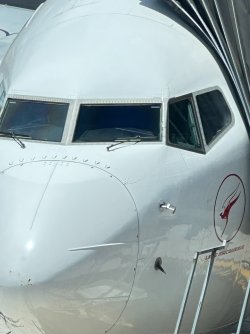How much of the "automatics" is still available to you in a 2-engine out scenario on the 380? For example, can you do an overweight autoland with two engines out on the same wing? Or does it revert to an operating law that removes that option and you are going to be bringing it around and back down manually?
Sorry, I didn’t completely answer your question. As I said, two engines out but symmetrically is a doodle. Everything works, and the performance is surprisingly good. But as soon as it’s on one wing only, the amount of rudder that you need increases drag dramatically, and performance falls off a cliff. Autoland won’t be available at all, with the later stage of any approach being flown without autopilot or auto thrust. Throw overweight into the equation, and you’ll have become a space shuttle pilot….you must land off the approach. At more reasonable weights a go around is possible, but not from below 1,000’. The loss of one of the hydraulic systems will mean that you cannot completely retract the landing gear (wing and body/nose are on different systems).
For me, when I listen to those ATC playbacks on shows like Mentour and others, I often rely on the sub-titles to understand what they're saying.
I don't know how clear they are in the coughpit and you folks wearing the headphones but I'd hope that they are more understandable at your end.
Context always helps. We know what phrases are expected, so as long as they stick to the standard wordings, it’s generally pretty clear. The worst ones that I can recall were the Koreans. Their version of english, and my ears, just weren’t compatible. Actually flying into Seoul you’d be handled by the military controller in some sectors, and they actually had excellent, US accented, English, but the civil controllers were a lot more difficult, so you’d go from easy to hard to understand during the descent.
When we first started flying over Russia, they had translators working with the controllers. Their English was good, but they didn’t necessarily translate into ICAO phrases, which could be confusing. Before the unpleasantness, they’d become pretty decent. Probably the hardest now would be mainland China. In any event, their English is miles better than my Chinese.
We make sure that all of us in the coughpit agree with what is being said, and if there’s the slightest doubt, just ask. With one exception, controllers never mind clarifying or repeating. The exception? Well, the good old USA of course. Whilst they supposedly speak English, their use of standard phrases tends to be overwhelmed by their desire to invent a new term for everything. Plus they’ll do so at a thousand words per minute, and if you dare query them they (well, New York anyway) can become extremely snarky.
















